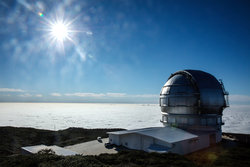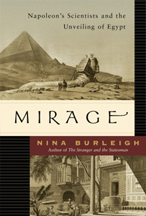Way, way out in the Atlantic Ocean, at a point where one of Earth's four cold water currents meets the searing African desert winds, nights are dark as prehistory. Once the sun sets on the volcanic archipelago known as theCanary Islands, a misty net of extraterrestrial white light blankets the sky from horizon to horizon. Until dawn, every ray of visible starlight in the entire Northern Hemisphere and much of the Southern Hemisphere gathers overhead. That sprawl of sky over a small island speck on the black ocean suggests, like few other experiences, the nanosecond that is human life.
Such black nights and clear skies have beckoned astronomers to install some of the world's most powerful telescopes on volcanic peaks in this archipelago off the northwestern coast of Africa. As scientists use these state-of-the-art observatories to search out signs of the Big Bang, at sea level 8,000 feet below, tens of thousands of mostly British pensioners and brides-to-be on "hen parties" are getting drunk and sunburned.
Five million tourists annually visit this Spanish territory from colder climes to bask in Europe's only subtropical weather. The port at Tenerife, the largest island, is the third-most-visited cruise ship destination in Europe.
Read the rest here.









Leave a comment